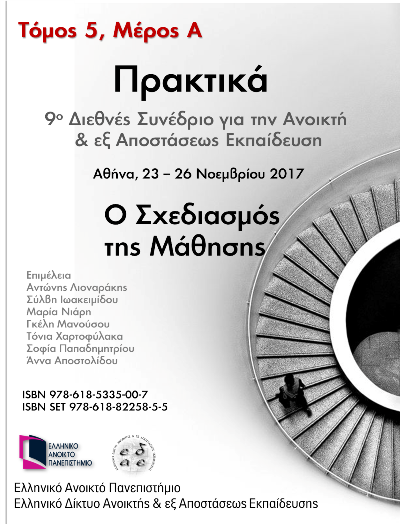Σχεδιασμός Μαθηματικών Μονοπατιών για την αξιοποίηση m-learning στην Ρεαλιστική Μαθηματική Εκπαίδευση

Περίληψη
Στο άρθρο παρουσιάζεται ο σχεδιασμός και η πρώτη πιλοτική εφαρμογή ενός μαθηματικού μονοπατιού, ενισχυμένου με φορητές συσκευές, για μαθητές δημοτικού σχολείου. Στο μαθηματικό μονοπάτι, οι μαθητές οδηγούνται, μέσω ενός ψηφιακού χάρτη, σε μια σειρά προεπιλεγμένων τοποθεσιών ενός πάρκου όπου επιλύουν ειδικά σχεδιασμένα μαθηματικά προβλήματα χρησιμοποιώντας πληροφορίες από το περιβάλλον. Ειδικότερα, οι μαθητές, μετρούν τις διαστάσεις πραγματικών αντικειμένων είτε με συμβατικά όργανα είτε με εφαρμογές μέτρησης σε ταμπλέτα. Σύμφωνα με τα ερευνητικά ευρήματα, οι μαθητές έλυσαν συνεργατικά τους γρίφους εφαρμόζοντας και ενισχύοντας τις μαθηματικές τους γνώσεις στο πλαίσιο μιας αποτελεσματικής και ελκυστικής μαθησιακής δραστηριότητας. Επιπλέον, οι μαθητές προβληματίστηκαν σχετικά με τις διαφορές των μετρήσεων των συμβατικών και των ψηφιακών εργαλείων και αυτή η σύγχυση προκάλεσε κοινωνική διαπραγμάτευση. Η παρούσα έρευνα ενδιαφέρει μαχόμενους εκπαιδευτικούς και ερευνητές επειδή συνεισφέρει στην προσπάθεια ανάπτυξης μιας θεμελιωμένης θεωρίας σχετικά με τον σχεδιασμό m-learning για ΡΜΕ.
Λεπτομέρειες άρθρου
- Ενότητα
- Άρθρα


